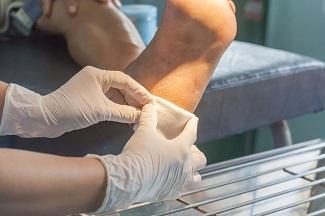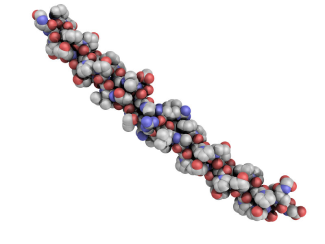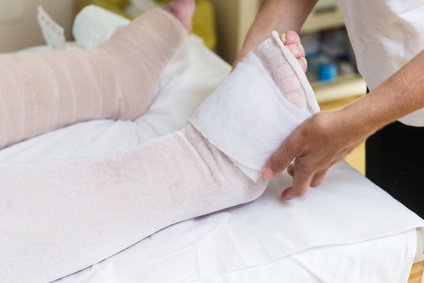Properties of Moist Wound Healing
July 30, 2020
Studies have shown significant value in moist wound healing as opposed to treatment of wounds in a dry environment, and clinical evidence has supported this view for many years. Moist wound healing has been shown to promote re-epithelialization and can result in a reduction of scar formation because a moist environment keeps new skin cells alive and promotes cell regrowth.1 Treatment of wounds in a moist environment additionally shows promise for the creation of a microenvironment conducive to regenerative healing without scar formation.2 For these reasons, clinicians often select dressings that will create and manage a moist wound environment.
Important Considerations in Moist Wound Healing
A decreased inflammatory response creates the possibility for a related decrease in scarring when wounds heal. Studies have shown that chronic wounds generally,3 and diabetic foot ulcers specifically,4 respond especially well to moist healing environments. In the case of chronic wounds, moist healing significantly enhances the rate of wound contraction, with regular assessments demonstrating the size of the wound area reducing over the course of 12 days.
Benefits compared with dry wound healing
When a controlled, moist microenvironment is created, the wound surface acts as a highly permeable membrane. This microenvironment allows for several benefits over dry wound treatment. These benefits include:
- Addition of a variety of solutions at known concentrations to treat the wound
- Better and more exact readings on such factors as uptake and rate of elimination
- Detailed analysis of the byproducts of the wound healing process
In addition to more precise monitoring of the foregoing factors, moist treatment has been clinically shown to:
- Reduce inflammatory reactions
- Limit injury progression
- Promote faster healing
- Reduce scar formation
- Allow for cellular migration
A final and important note is that the use and application of moist healing dressings reduce the economic impact on health care systems and home health providers because dressing change frequency per patient is significantly reduced compared with patients with traditional gauze or wet-to-dry wound dressings.5
How to achieve moist wound healing
Precise control and monitoring are essential for a successful moist wound healing process. Recommendations6 for creating a moist wound environment include the application of a moisture-retentive dressing for up to three days. These dressings may include one or more of the following:
- Hydrogel
- Petroleum jelly
- Hydrocolloid dressing
- Gelling alginate dressing
- Film dressing
- Occlusive foam dressing.
For the study of wet wound healing, as opposed to simple moist healing environments, other applications include the use of small, saline-filled clear vinyl chambers over the wound sites to create a wet wound environment.
Conclusion
Technological advances in moist wound dressings are ongoing. Technical and industry observers report that leading companies are working to develop moist dressings with different properties of absorption, hydration, and antibacterial activity. Current work in the field focuses on improving the condition of the wound bed tissue and providing products that repair and regenerate damaged tissue.7 Watch for promising developments in the areas of keratin-based wound management and keratin-based dressings that can enhance cell growth when paired with moist wound healing technology.
References
1. Junker JP, Kamel RA, Caterson EJ, Eriksson E. clinical impact upon wound healing and inflammation in moist, wet, and dry environments. Adv Wound Care (New Rochelle). 2013;2(7):348-356. doi:10.1089/wound.2012.0412
2. Cavaliere C. Should you bandage a cut or sore, or let it air out?. Cleveland Clinic. 2017. https://health.clevelandclinic.org/cover-wound-air/. Accessed April 14, 2020.
3. Souliotis K, Kalemikerakis I, Saridi M, Papageorgiou M, Kalokerinou A. A cost and clinical effectiveness analysis among moist wound healing dressings versus traditional methods in home care patients with pressure ulcers. Wound Repair Regen. 2016;24(3):596-601.
4. Ravari H, Modaghegh M-HS, Kazemzadeh GH, et al. Comparision of vacuum-assisted closure and moist wound dressing in the treatment of diabetic foot ulcers. J Cutan Aesthet Surg. 2013;6(1):17-20.
5. Sood A, Granick MS, Tomaselli NL. Wound dressings and comparative effectiveness data. Adv Wound Care (New Rochelle). 2014;3(8):511‐529. doi:10.1089/wound.2012.0401
6. London Health Sciences Centre (LHSC). Wound care management. London, Ontario, Canada: LHSC; n.d. https://www.lhsc.on.ca/wound-care-management/is-the-wound-wet-or-dry. Accessed April 15, 2020.
7. Technavio Research. Global Moist Wound Dressings Market 2018-2022| Advances in Moist Wound Dressing Technologies to Boost Growth| Technavio. Business Wire (English). 2018. https://www.businesswire.com/news/home/20180608005818/en/Global-Moist-W…. Accessed July 6, 2020.
The views and opinions expressed in this blog are solely those of the author, and do not represent the views of WoundSource, HMP Global, its affiliates, or subsidiary companies.













Follow WoundSource
Tweets by WoundSource